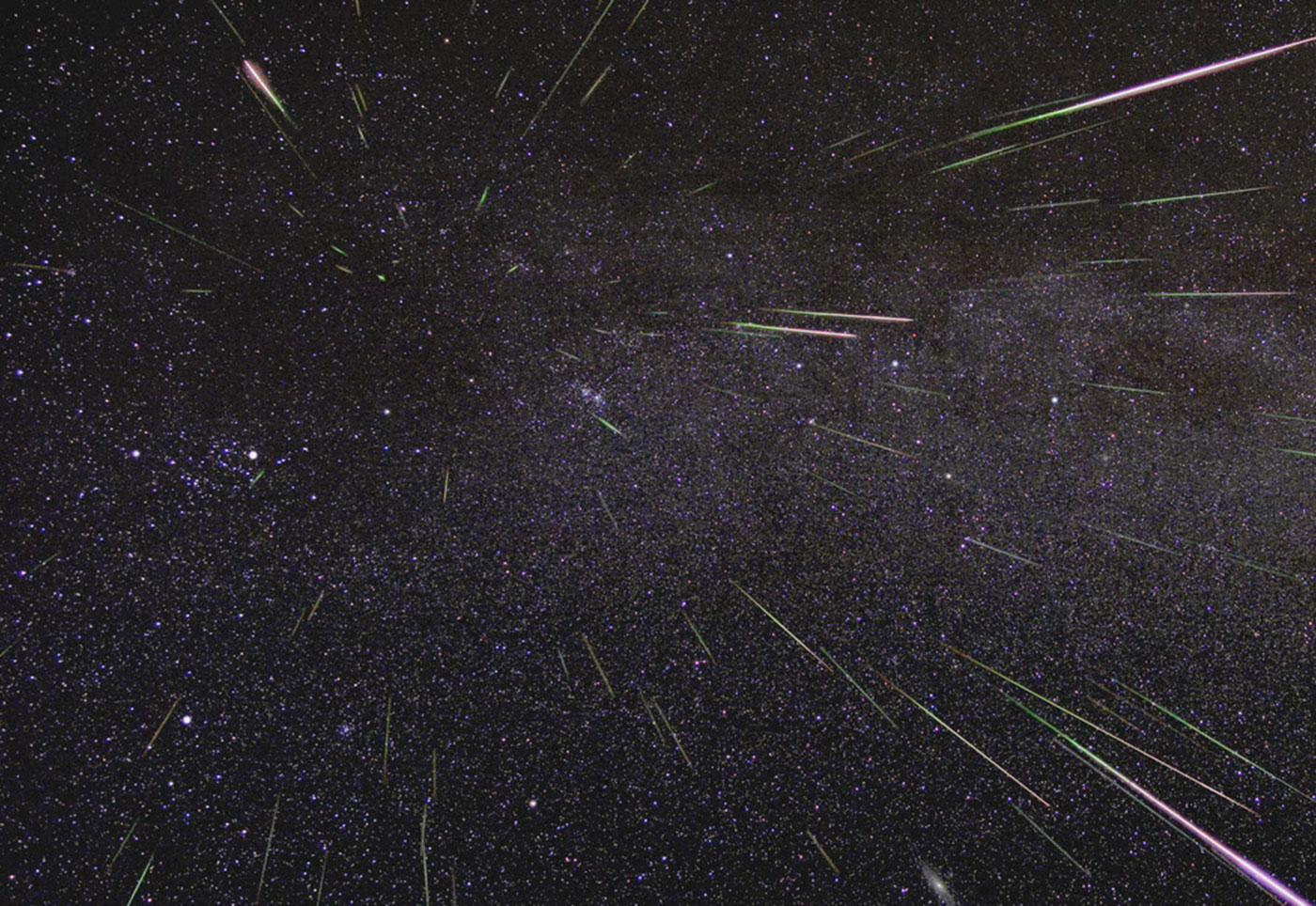Date:
The Perseid shower runs from late July to late August, peaking on or around August 12 every year. The new moon this year (2018) occurs on Saturday, August 11. Peak viewing of the meteor shower will occur Saturday, August 11 through Monday, August 13. On Sunday and Monday, the moon will be in its new phases, meaning it sets very early, creating a nice dark sky for viewing. The hourly meteor rate should be between 80 and 150, although these numbers and times are very widely debated by professional observers and wholly dependent on your observing situation.
Meteors are sand-grain-sized particles typically “melted” out of the icy nucleus of a comet as it passes near the sun during its voyage around the solar system. The meteors are usually distributed along the orbital path of the comet and fall into the Earth’s atmosphere when the earth passes through the comet’s path. The comet associated with the Perseids is Comet Swift-Tuttle, first identified in 1862. It has an orbital period of about 120 years and was last seen in 1995.
Meteor showers occur when the earth passes through a meteor stream. Viewing these events is not unlike wading through a stream in the woods: moist at the bank, shallow at the edge, deepest in the middle and then the reverse of shallow at the edge and moist at the bank. The meteor shower is minimum at first, gradually increasing to peak intensity, then the number of meteors decreases after the peak back down to a normal background rate of 10 per hour.
The meteors put on their display 35 to 40 miles above the Earth’s surface. The glow is caused by the compression and heating of the air cushion built up just ahead of the meteor as it plunges into an ever-thickening atmosphere. The heated atmosphere heats the meteor while the shock of high-speed collision with the atmosphere breaks off pieces of the particle. Traveling at 45,000 miles per hour, it’s no wonder that they heat, glow and then break up as they streak through the atmosphere.
In space, the particles are called meteoroids. If they enter the Earth’s atmosphere, they’re called meteors and typically ‘burn up.’ If the objects are big enough to actually reach and hit the ground, we call them meteorites. A meteor must be about the size of a grapefruit or softball to make the plunge through the atmosphere all the way to the surface.
"The best way to observe is from a dark sky location away from city lights, with folding chairs, a radio for music, plenty of friends looking all around the sky and some after-barbecue dessert."
While there are roughly a dozen major meteor showers annually, two stand out as reliably impressive each year. This depends, of course, on observing conditions. These two meteor showers are the August Perseid shower and the December Geminid shower.
To view any meteor shower, you need clear dark skies to maximize your view of the meteors, meaning it is best to travel away from city lights. Viewing under urban skies severely compromises what can be seen. The meteors will appear all over the sky even though the name implies they might be seen in one direction; a telescope should not be used for observing a meteor shower at all. Viewers will need the widest possible sweep of sky view to take in their appearance; a telescope does exactly the opposite – it focuses on a minuscule piece of the sky dramatically driving down your chance of seeing meteor activity.
The best way to observe is from a dark sky location away from city lights, with folding chairs, a radio for music, plenty of friends looking all around the sky and some after-barbecue dessert. In other words, I suggest an outdoor summer evening observing event where meteors might be seen, and, this way, even if you don’t see many or any, you’ll still have a good time.
If you cannot get away to a dark sky site, try to avoid brightly lit areas like parking lots and shopping centers. Dark backyards with wide views of the sky but without security lighting or streetlights should work. Don’t forget to bring a bucket of patience. The highest rate of the shower only yields two per minute on average.
While you’re out, you can use binoculars to observe the other cool things to see like the moon and the planets available this summer (this year, you can see Venus, Jupiter, Saturn and Mars, in that order from West to East), while trying to catch a few meteors.
Get some friends together and have a great night out this week enjoying the evening sky.
Learn more about viewing meteor showers
Learn more about viewing satellites
Written by Derrick Pitts. Image: NASA/JPL



